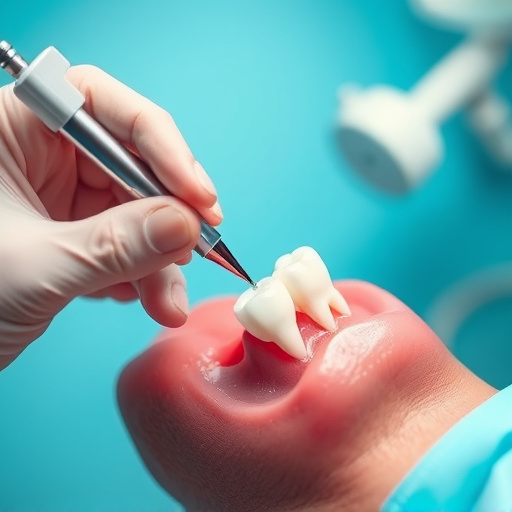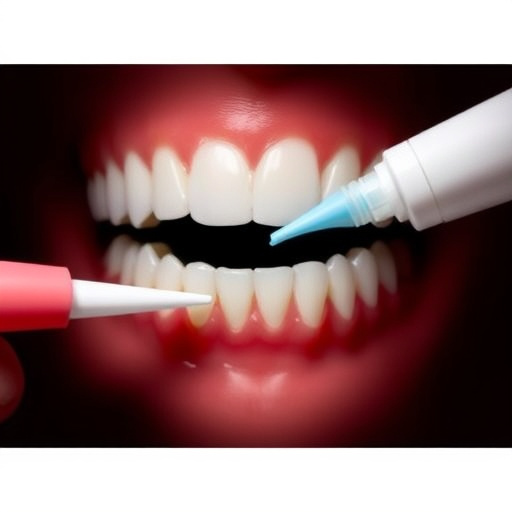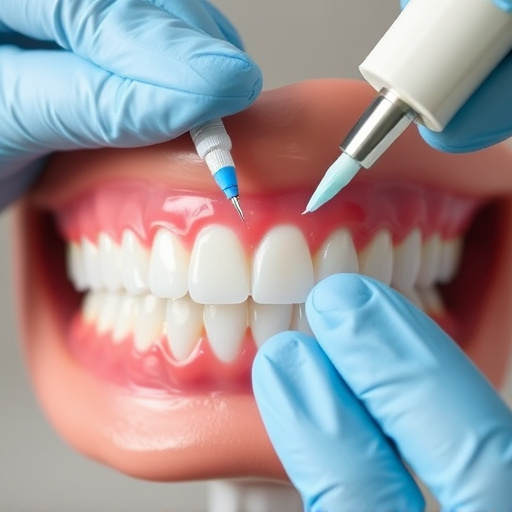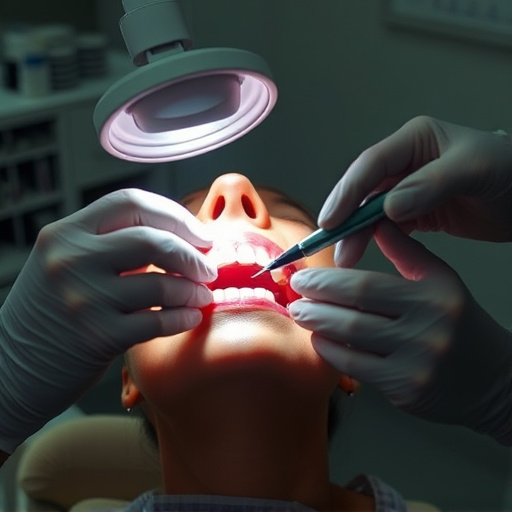TMJ disorder, a complex condition affecting the jaw joint and muscles, causes chronic pain, stiffness, and chewing difficulties. Treatment options range from preventive care like regular cleaning to advanced procedures such as splints, physical therapy, medication, injections, and surgery as a last resort. Non-surgical approaches are often preferred; these include orthodontic treatment, dental fillings, implants, and lifestyle adjustments like diet changes, exercises, stress management, and mouth guards. A collaborative effort between family and cosmetic dentistry professionals is typically required for effective TMJ disorder treatment.
Struggling with TMJ disorder (TMD)? You’re not alone. This common condition affects millions, causing jaw pain, headaches, and even facial tenderness. While surgery is sometimes necessary, there’s hope beyond the operating room.
This guide explores effective TMJ disorder treatment options without surgery, from understanding your condition to practical lifestyle changes and home remedies that offer real relief.
- Understanding TMJ Disorder and Its Impact
- Exploring Non-Surgical Treatment Approaches
- Lifestyle Changes and Home Remedies for Relief
Understanding TMJ Disorder and Its Impact
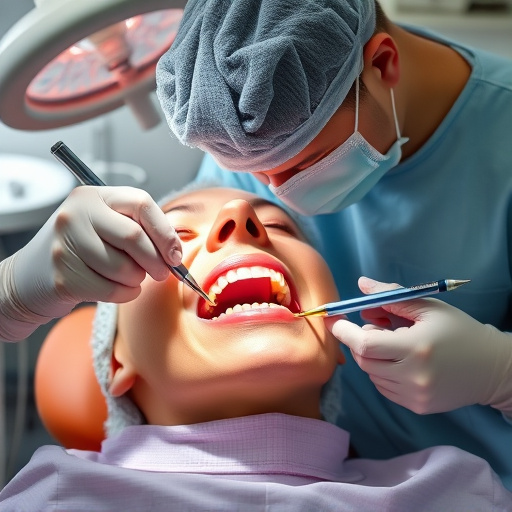
TMJ disorder, or Temporomandibular Joint Disorder, is a complex condition affecting the jaw joint and surrounding muscles. It can cause a range of symptoms, including chronic facial pain, jaw stiffness, difficulty chewing, and even headaches. The impact of TMJ disorder extends beyond physical discomfort; it can also affect an individual’s quality of life, making simple tasks like eating or speaking challenging. Many sufferers experience anxiety and depression due to the persistent pain and limited jaw function.
Understanding the causes and effects is crucial when exploring TMJ disorder treatment options. It can arise from various factors such as jaw misalignment, teeth grinding (bruxism), traumatic injuries, or arthritis. A comprehensive approach to treatment involves a collaboration between family dentistry professionals and sometimes cosmetic dentistry specialists. Regular teeth cleaning is an essential preventive measure, but for those already dealing with TMJ disorder, specialized care may include splints, physical therapy, medication, or even advanced procedures like joint injections or, as a last resort, surgery.
Exploring Non-Surgical Treatment Approaches
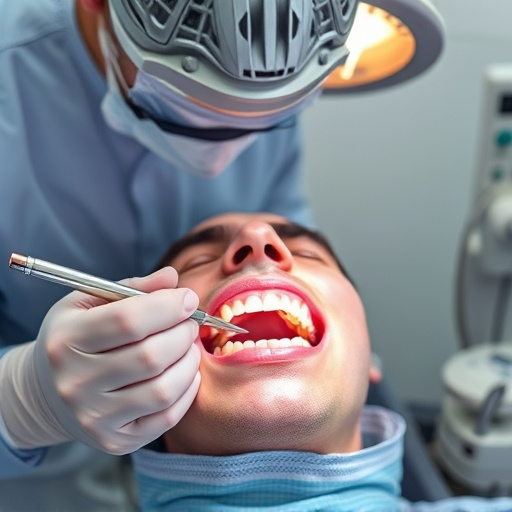
When considering TMJ disorder treatment options, it’s understandable to seek non-surgical approaches first. After all, surgery is often seen as a last resort. Luckily, several effective treatments are available that can provide significant relief from TMJ symptoms without invasive procedures. These methods focus on addressing the underlying causes and improving jaw function, mobility, and overall comfort.
One popular non-surgical option is orthodontic treatment, which uses braces or other appliances to realign the jaw. This can be particularly beneficial for patients with issues related to bite misalignment or irregular tooth positioning. Additionally, dental fillings or cosmetic dentistry procedures like contouring or reshaping teeth can sometimes alleviate TMJ symptoms by correcting bite issues and reducing strain on the temporomandibular joint. For those seeking long-term solutions, advanced dental implants offer a stable and permanent fix for jaw misalignments, providing relief from chronic TMJ disorder discomfort.
Lifestyle Changes and Home Remedies for Relief
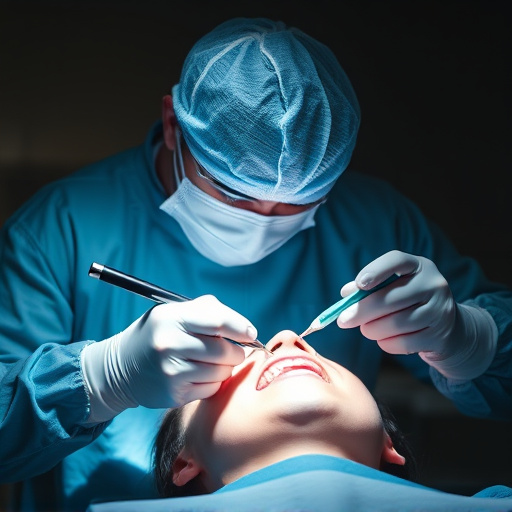
Many people suffering from TMJ disorder find relief through simple lifestyle changes and home remedies. One effective strategy is to maintain a balanced diet, avoiding hard or chewy foods that can strain the jaw joint. Increasing physical activity focused on the face and jaw muscles, such as gentle massaging and stretching exercises, can also help reduce symptoms. Additionally, managing stress through techniques like meditation and yoga has been shown to alleviate tension in the facial areas, including the jaw.
Regular routine oral exams with your dentist are crucial for monitoring TMJ disorder progress. They may recommend specific home care practices tailored to your needs, such as using a mouth guard during sleep to prevent teeth grinding (bruxism). In some cases, wisdom tooth removal or adjusting dental crowns can alleviate pressure on the TMJ. These non-surgical interventions offer safe and effective TMJ disorder treatment options for many individuals looking to avoid surgery.
In light of the above, it’s clear that effective TMJ disorder treatment without surgery is achievable through a combination of understanding your condition, exploring non-invasive options, and making thoughtful lifestyle changes. By delving into these approaches, you can find relief from symptoms and improve your overall quality of life without resorting to surgery. Remember that each person’s journey with TMJ disorder is unique, so it’s essential to consult with healthcare professionals who can guide you towards the best treatment plan for your needs.








